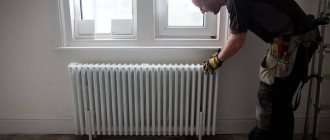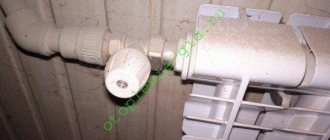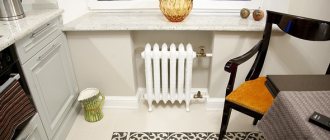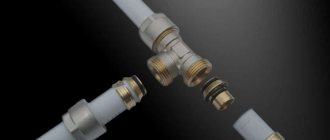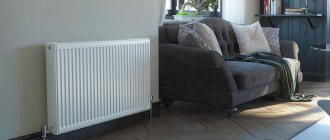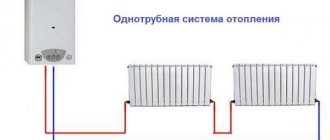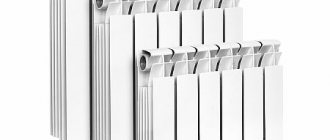Cast iron radiators are considered the most suitable for heating apartments and private houses.
Contrary to popular belief, such batteries are not a relic of the past. Thanks to the use of modern technologies, they perform not only a practical, but also a decorative function, because they are often decorated with forging elements.
Despite the fact that the popularity of cast iron batteries has decreased slightly, many users prefer these models.
They are very durable and wear-resistant, have increased resistance to rust, heat up quickly and cool down slowly.
To make it easier to choose a suitable heating device, we have compiled a rating of the best cast iron batteries according to the 2021-2022 version and a short list of criteria that people pay attention to when choosing.
Rating of the TOP 15 best cast iron heating radiators for 2021-2022
| Place | Name | Price |
| TOP 3 best cast iron heating radiators by price/quality for 2021-2022 | ||
| 1 | Exemet Romantica | Find out the price |
| 2 | RETROstyle WINDSOR | Find out the price |
| 3 | RETROstyle CHAMONIX | Find out the price |
| TOP 3 best modern cast iron radiators | ||
| 1 | STI Nova | Find out the price |
| 2 | Conner Modern | Find out the price |
| 3 | Viadrus Style | Find out the price |
| TOP 3 best retro cast iron radiators | ||
| 1 | RETROstyle BARTON | Find out the price |
| 2 | Exemet Rococo | Find out the price |
| 3 | RETROstyle DERBY M | Find out the price |
| TOP 3 best floor-mounted cast iron radiators | ||
| 1 | GuRaTec Diana | Find out the price |
| 2 | RETROstyle TELFORD | Find out the price |
| 3 | Iron Lion Mangus | Find out the price |
| TOP 3 best inexpensive cast iron radiators | ||
| 1 | RETROstyle TOULON | Find out the price |
| 2 | Viadrus Kalor | Find out the price |
| 3 | Exemet Neo 3 | Find out the price |
Which manufacturer should you choose?
To know how to choose batteries for a private house, you need to keep in mind that the heating system in a private house with a gas boiler has its own characteristics. They are associated with low operating pressure in the network, the absence of pressure surges and the ability to use special liquids rather than ordinary water as a coolant.
When choosing which radiators are best for a home with a gas boiler between aluminum and cast iron, experts recommend choosing cast iron appliances of modern design. The STI Nova 500x10 model warms up quickly, and after a short period of time thermal radiation begins to be felt. When the boiler operates at medium load, it produces enough heat. Adapted to the climatic conditions of our country.
Classic models like MS-140 are not recommended for installation in a house with a gas boiler. This is due to the fact that in a closed circuit of the house there is no need for protection against water hammer; it is possible to control the quality of the coolant.
Reliability, durability, strength - these qualities of cast iron radiators are valued by people. Manufacturers do not stand still, developing new models that combine the advantages of cast iron batteries with a beautiful design.
How to choose cast iron radiators in terms of price/quality ratio?
The main criterion for choosing a cast iron battery is its thermal power. For a room with a standard ceiling height (250-270 cm), a 120 W battery will be sufficient.
The following characteristics are also taken into account:
- Radiator color . The traditional color of radiators is white, but on the modern market there are models in dark shades. This option is better, because black or brown batteries give off heat better.
- Location . Most models of cast iron radiators are designed for wall mounting, but there are radiators for floor installation. In the first case, fasteners for installation are provided with the battery, and in the second case, the radiator is equipped with special stable legs.
- Maximum pressure . Outdated radiators could withstand pressures of up to 8-10 atmospheres. Modern models are able to withstand changes from 12 to 18 atmospheres.
- Coolant volume . In the past, it was this indicator that played a key role when choosing a radiator, so in older models the coolant volume was one and a half liters. In modern radiators this figure has dropped to 0.8 liters.
It is not recommended to repaint batteries frequently, since each layer of paint reduces heat transfer.
Disadvantages of cast iron batteries
Despite many advantages, cast iron radiators have a number of disadvantages. This was facilitated by both the design features and the properties of the cast iron itself. For example, cast iron batteries have difficulty integrating into automatic temperature control systems.
Due to the inertia of heat transfer, it is quite difficult to control the set temperature in the room. After all, after turning off the boiler, cast iron radiators will give off their heat for another hour, warming the surrounding air.
It takes about half an hour to reheat the entire mass of the battery and the water it contains. Throughout this period, the room will practically not warm up.
There are also other disadvantages, including:
- large volume of coolant;
- significant weight of one radiator;
- design uniformity.
The large volume of water in the battery also has its disadvantages. Warming up the entire coolant requires more time and energy resources.
In addition, the load on the pump increases, which is forced to pump a significant amount of water in one heating cycle.
The volume of the cavities of a cast iron battery is at least 2 times larger than that of an aluminum battery and 4 times larger than that of a bimetallic battery
The heavy weight of the devices is also a disadvantage that worries installers and service departments more than residents. However, when assembling a heating system yourself, you cannot do without an assistant when attaching the cast iron battery. The weight of one section is about 7 kg.
Such a disadvantage as design uniformity is due to the technological features of cast iron - they do not allow creating elegant parts from this material. The batteries look the same.
Due to the simplicity of the design, the energy efficiency of the MS-140 battery models is one of the worst, but the price of such devices is also the lowest
To diversify the model range, manufacturing companies produce cast iron radiators with a beautiful pattern on the surface, but their cost is 10-20 times higher than the price of simple models.
However, if you don’t have the funds for expensive exclusive models, you can purchase ordinary radiators and then disguise them using a screen for batteries.
The intricate patterns and varying heights and widths of the radiators provide some variety among the more expensive radiators. This allows designers to integrate cast iron batteries into sophisticated interiors
Another drawback is the equipment’s vulnerability to water hammer. The fact is that cast iron is a strong, but rather fragile material. According to GOST 8690-94, radiators must withstand short-term pressure of 1.5 MPa.
But sometimes the pressure can exceed this value. This happens when the pump starts abruptly and there are no compensators. As a result, cast iron batteries may crack or burst.
Battery rupture is often accompanied by preliminary clicks and hissing. These sounds should alert you and force you to block the coolant's access to the radiator.
In many cases, the advantages of cast iron radiators greatly outweigh their disadvantages. It is this fact that helps such batteries maintain a good position in the heating systems market.
How to calculate the number of sections for a bedroom
There are several methods for determining the number of segments. The simplest option involves using the formula: N = (100 x S)/Q
How to calculate the number of radiator sections - online calculator
Explanation of values:
- N – number of sections;
- S – room area;
- Q – section heat transfer indicator.
The calculations use an average value of 100 W. This is exactly the power of the device required to heat 1 m2.
You can get a more accurate result by taking into account factors such as:
- ceiling height;
- wall thickness;
- number of windows;
- climatic features of the region;
- on which side is the room located, etc.
All these are called correction factors. They are assigned the designations K1...K10. The formula with their participation is as follows: N = K1 x K2 x...K10 x (100 x S)/Q. This option is considered the most accurate.
How many kW in one section - heat transfer calculation
In the technical data sheet for the device, the manufacturer indicates the main characteristic of the battery section - thermal power (heat dissipation).
Often the actual and declared values are very different. This is possible when the actual temperature of the coolant differs from that indicated in the passport for the device.
To calculate the actual thermal power, use the following formula:
Q=K*S*dT
Where:
- S – heat exchange surface area;
- dT – temperature difference expressed in degrees Celsius;
- K is the heat transfer coefficient of cast iron.
To calculate the temperature difference, you need to know three parameters:
- Coolant temperature at the inlet (tinput);
- Coolant temperature at the radiator outlet (tout);
- Average room air temperature (tair).
We get the formula:
dT=0.5*(tinput + toutput) – tair
Differences between actual and stated results may be caused by the following factors:
- The underwater pipes are too long;
- Low coolant pressure;
- Insufficient coolant temperature.
To calculate the required number of sections, you need to know the required amount of heat to heat the room. There are two calculation options: by the area of the room and by the volume of the heated space.
For any of the options, choose the normalized value of the amount of heat required to heat a unit of area and volume of space, respectively.
Then the total amount of heat required to heat the entire room is obtained as the product of the normalized value by the area or volume (depending on the selected calculation option).
The required number of sections is equal to the quotient of dividing the required amount of heat by the amount of heat generated by one section of the device.
Installation Tips
Before proceeding with installation, the heating device is given the required color, the integrity of the threads on the nipples and the tightness of all sections are checked. Metal brackets are fixed on the wall at the lower and upper points so that one element per 1 square meter. m plane.
Placing a radiator under a window ensures that the centers of the window opening and the heating equipment will coincide, the interval between it and the floor will be within 70-120 mm, and the distance to the wall will exceed 30 mm. Connection to the supply pipes is carried out after fixing the battery.
In this case, independent installation of the heating device is impractical.
Introduction: history of appearance
A Russian German of Italian origin, Franz Karlovich San Galli, a resident of St. Petersburg , invented the very first heating device in 1885.
He called the invention “Heitz-Körper” (hot box). The familiar name for the radiator stuck when San Galli began promoting the idea of the design in Germany and the United States of America. In Russia, an ancient product, as an architectural monument and rarity, was preserved in Tsarskoye Selo at the dacha of Grand Duke Boris Vladimirovich.
To perpetuate the memory, for the 150th anniversary of the invention, a pedestal of an ancient cast-iron radiator was made in the entrance building of the Samara State District Power Plant.
Reliability characteristics look like this:
- operating temperature – 150 °C;
- pressure – 10-12 kg/cm2;
Characteristics and selection criteria
Example of designation of MS-140 grade BW according to the standard: MS-140-500-0.9-7 GOST 8690-94:
- depth of the heating device – 500 mm, measured at the centers of the nipples;
- operating pressure parameter – 0.9 kgf/cm2;
- number of elements – 7;
- the name of the regulatory document is GOST 8690-94.
How to choose black and white for a specific house: calculation examples
In a panel reinforced concrete house, 40 W of thermal power is consumed to warm up 1 m3 of air. A brick house consumes 35 W of thermal load.
Example 1. For a 24 m2 room in a panel house with a wall height of 3.2 m, the air volume is 24·3.2 = 76.8 m3, therefore, 76.8·40 = 3072 W of heat is needed.
From Table 1, select the type of black and white to determine the number of sections:
- MS-140: 3072/160 = 19.2. 2 BW are installed, each with 10 sections.
- M-1: 3072/110 = 27.9. It will take 3 BW: 8+10+10 sections.
- M-2: 3072/143.2 = 21.4. 2 BW are mounted - 10 and 12 sections.
- M-3 is calculated: 3072/156.8 = 19.6. You need 2 BW, each with 10 sections.
- KONNER MODERN: 3072/150 = 20.48. 2 BWs of 10 and 11 sections are installed.
The choice of thermal load (kW) affects where the BW is located.
For 10 m2 of premises: 1 room, with 1 external wall and 1 window, – 1 kW; where 2 external walls and 1 window - 1.2 kW; 1 external wall and 2 windows – 1.3 kW.
The location of the BW is based on the volume of heated premises, the number of rooms, and window openings. A comfortable microclimate that meets the sanitary standards of international standards and Russia is achieved at an indoor air temperature of 18 °C.
Appearance of cast iron batteries:
- old style;
- new type of execution;
- retro style and design modifications.
The product configuration includes:
- sectional.
- solid cast.

